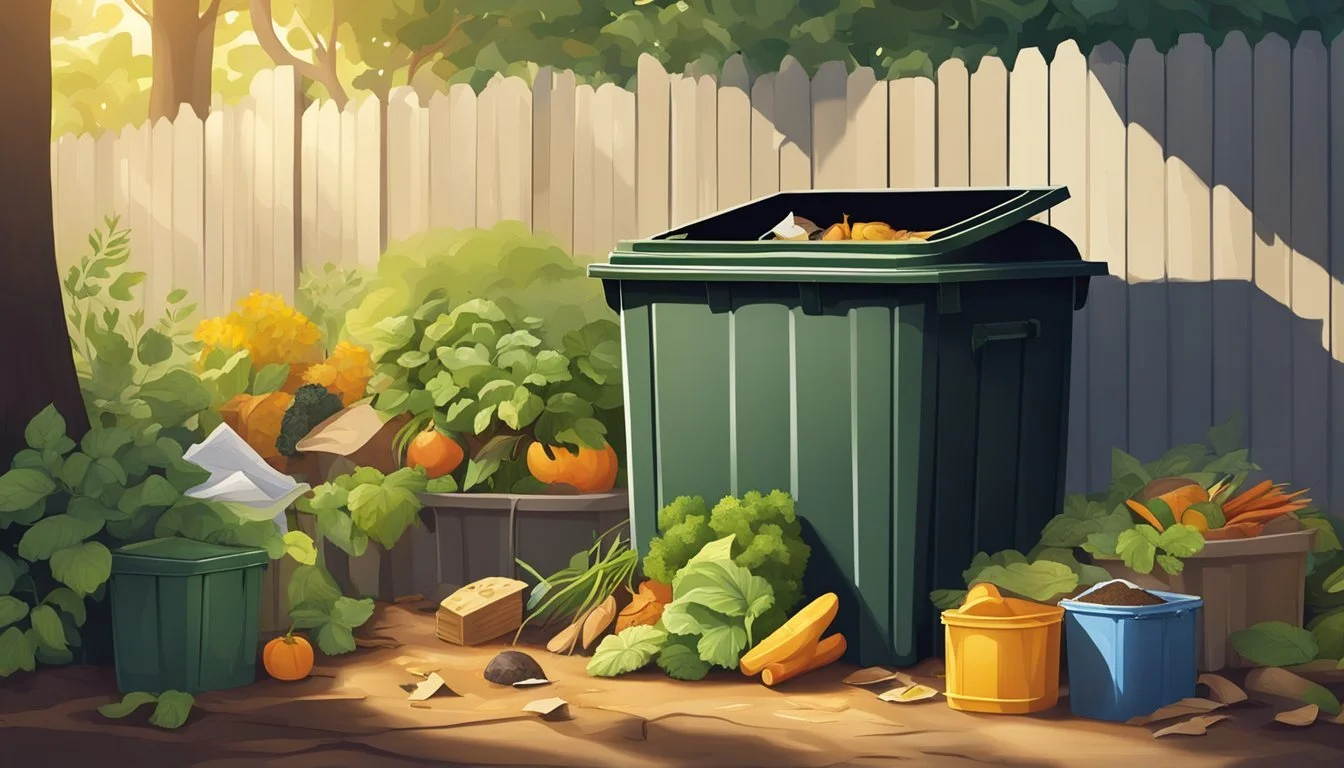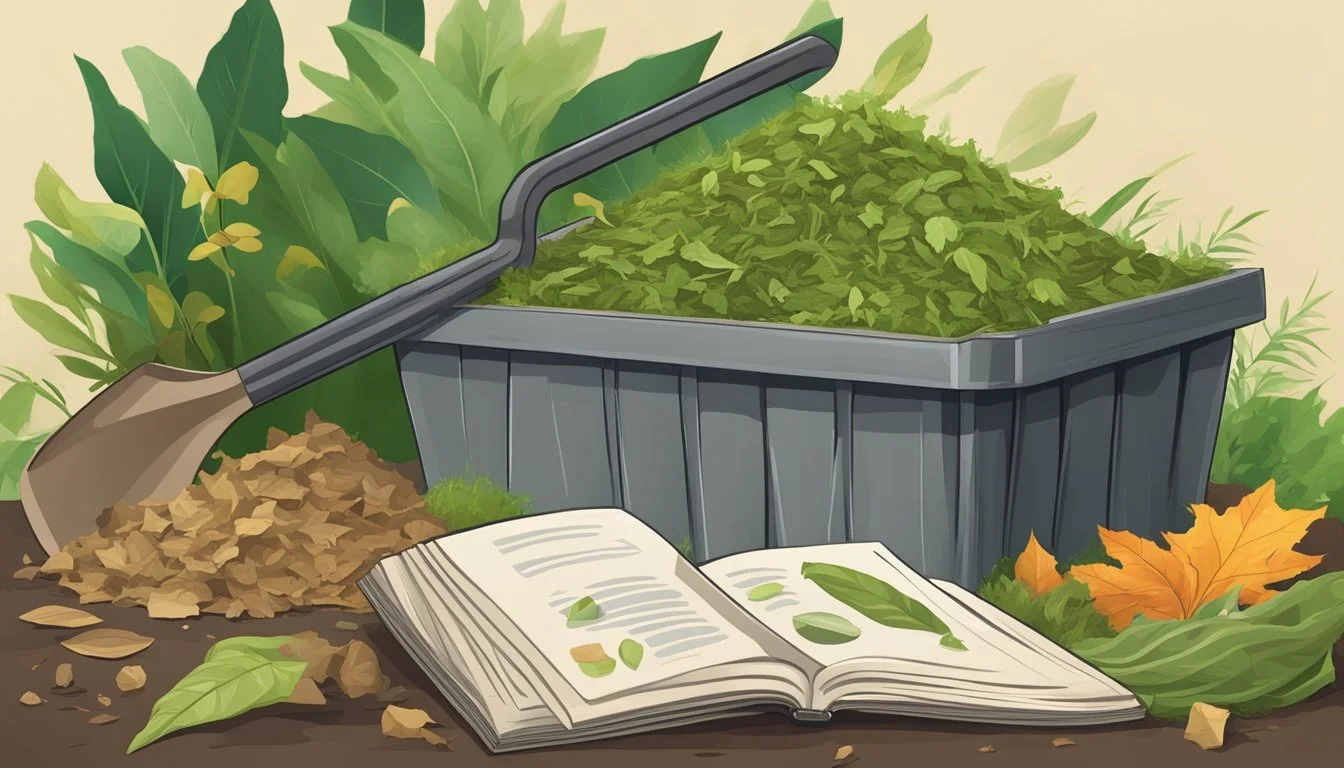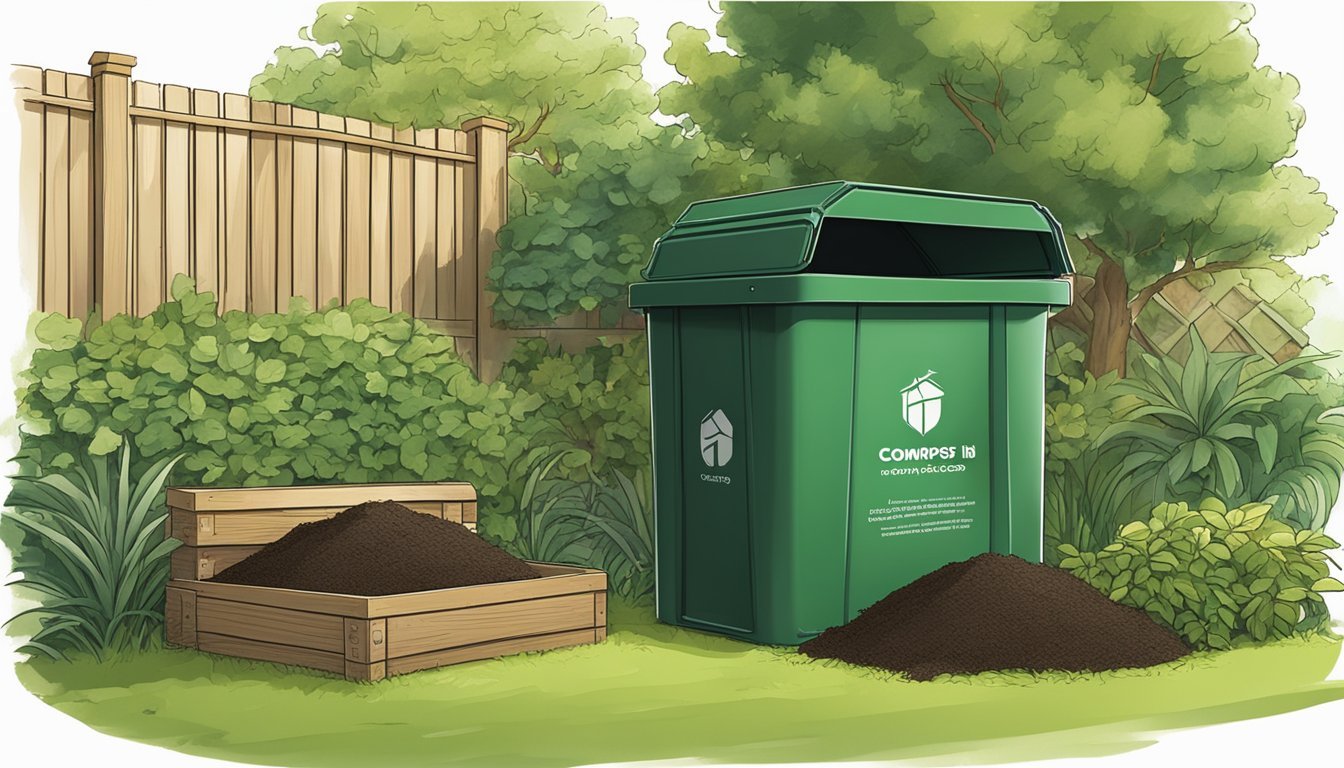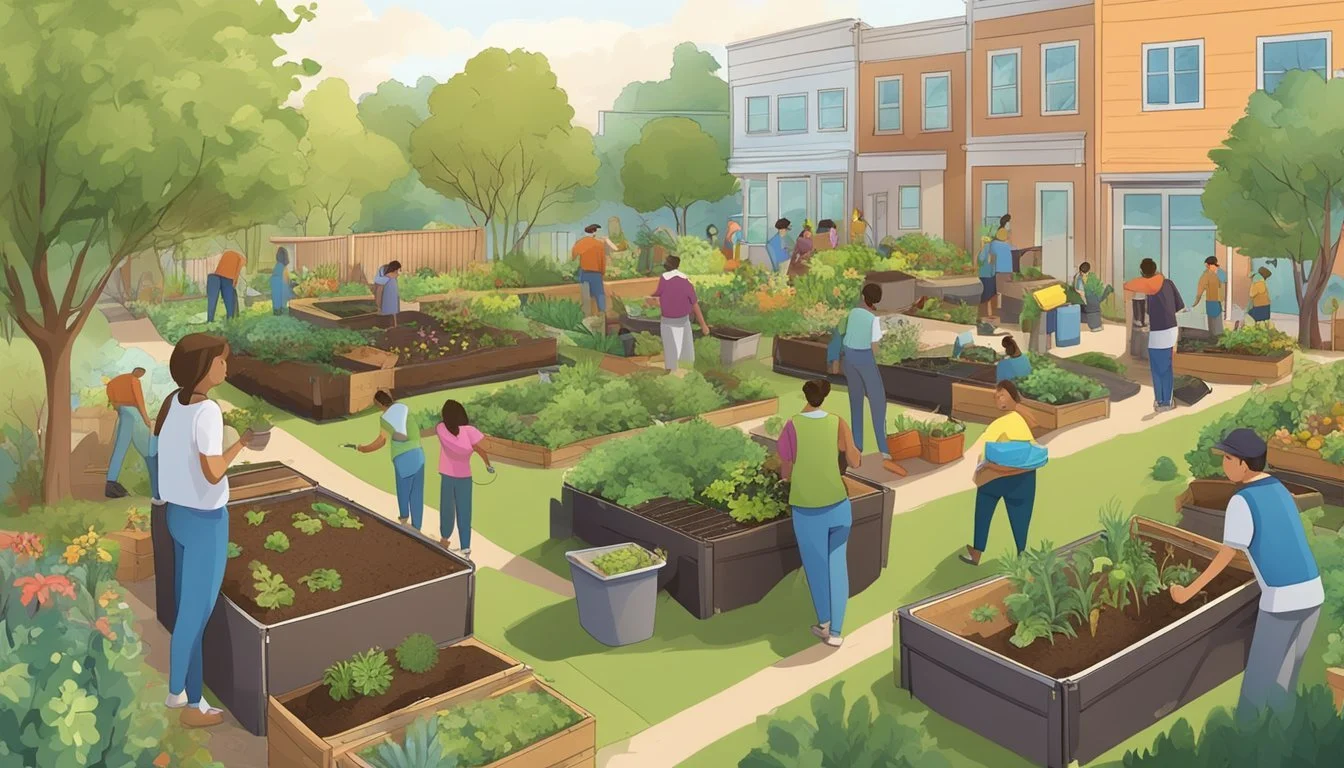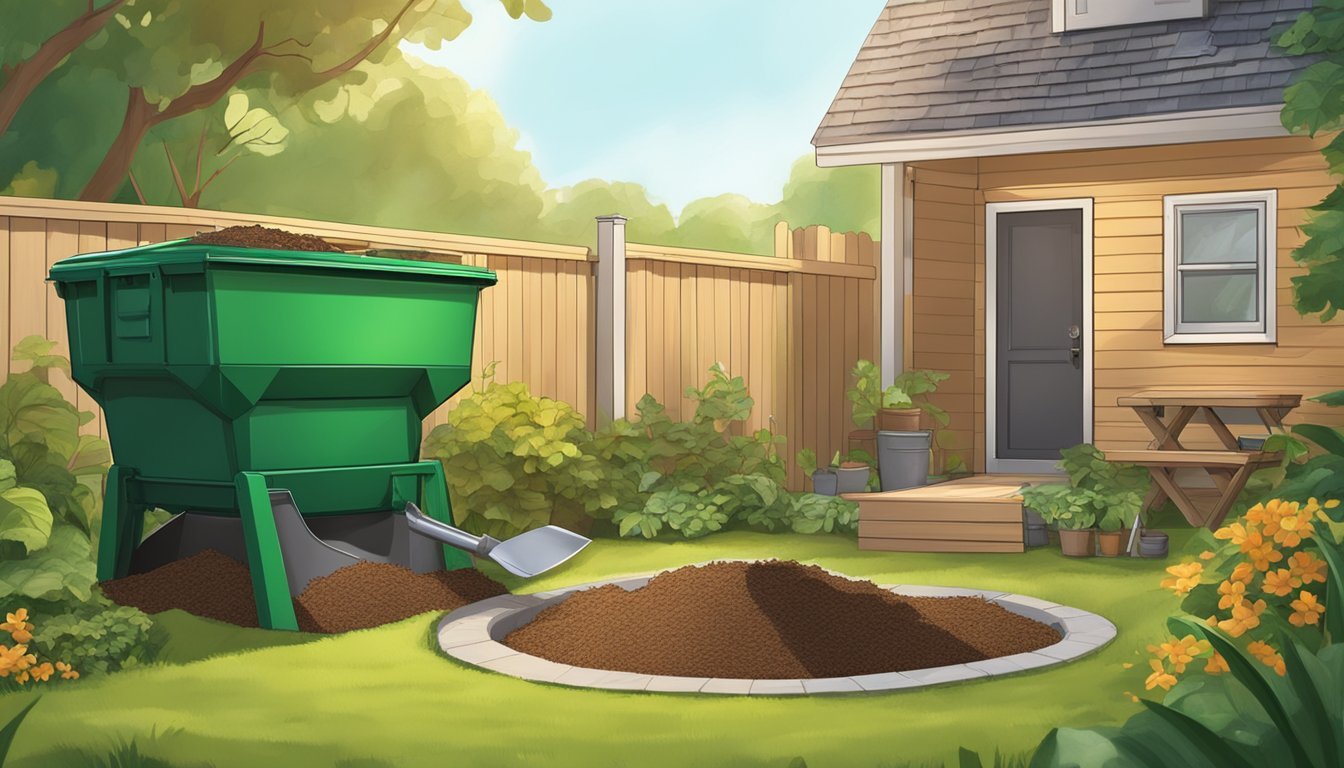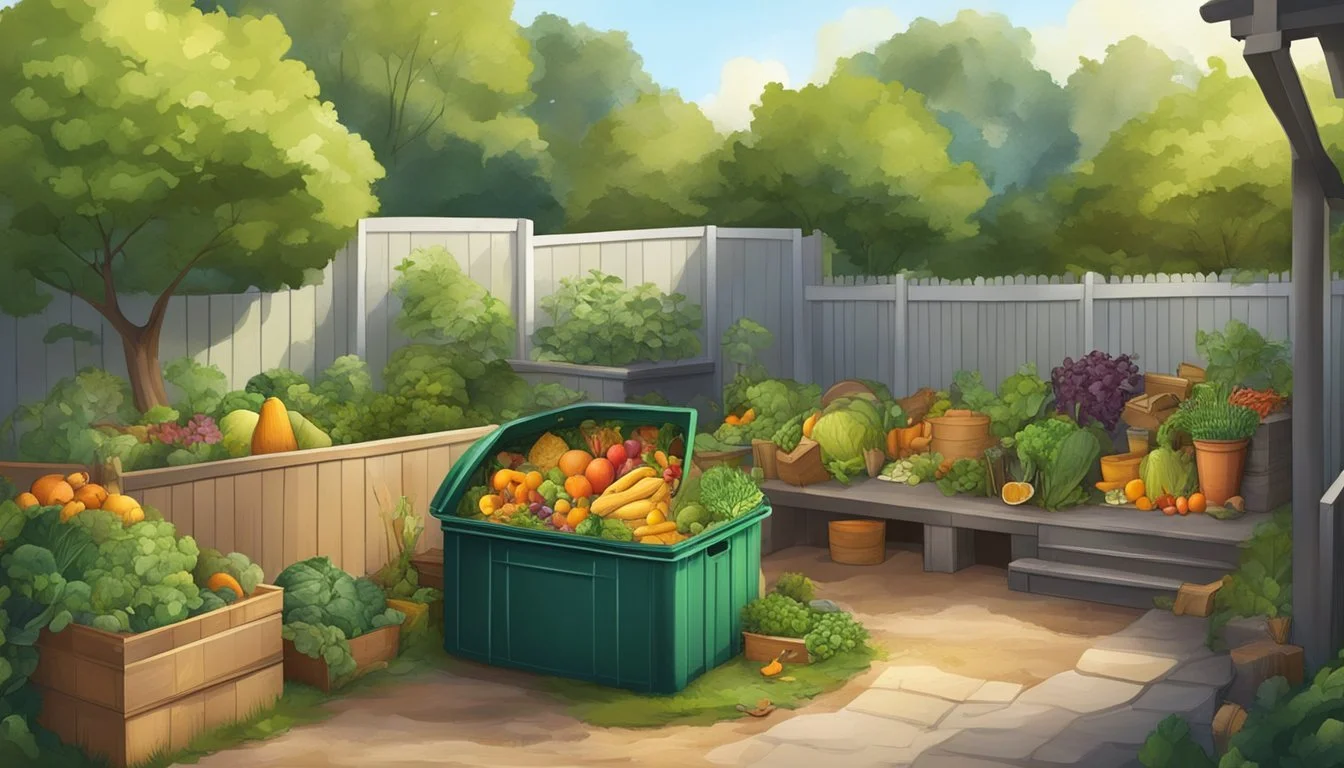Guide to Composting in League City, TX
Essential Tips for Sustainable Waste Management
Composting is a sustainable waste management practice that transforms organic household and yard debris into valuable fertilizer, enhancing soil health and reducing contributions to the landfill. In League City, Texas, residents have the opportunity to engage in this environmentally friendly activity, which can be done on a small or large scale depending on individual needs and space availability. Understanding the basics of composting, from the balance of greens and browns to maintaining appropriate moisture levels, is essential for a successful composting endeavor.
The city of League City provides resources to help citizens embark on their composting journey. Instructional guidance regarding how to create a viable compost pile and how to build a compost bin, especially suitable for small spaces, demonstrates the city's commitment to promoting sustainability. The process of composting involves managing a proper ratio of carbon-rich materials, such as dried leaves, and nitrogen-rich materials, like vegetable scraps, to breakdown organic matter efficiently.
League City also emphasizes the importance of composting as a method to reduce the volume of waste headed to landfills where it would otherwise release methane, a potent greenhouse gas. Compost created at home can be used to nourish gardens, contributing to a cycle of growth and sustainability within the community. Through composting, residents of League City not only contribute to the well-being of the environment but also enhance their own garden soil, all while participating in a rewarding, circular waste-management system.
The Basics of Composting
Composting is a critical process for League City residents looking to enrich their soil and minimize waste. This section will illuminate the fundamentals of composting, from its definition to the benefits and methods.
What Is Composting?
Composting is the process of recycling organic material, such as leaves, yard trimmings, and kitchen scraps, into a valuable soil additive known as compost. This rich substance is produced as microorganisms break down organic matter in a controlled environment, resulting in a nutrient-packed material that improves soil structure, fertility, and health.
Benefits of Composting
Composting offers a multitude of advantages for both the environment and gardeners. It enriches the soil, reducing the need for chemical fertilizers, and aids in retaining soil moisture. Important for the environment, composting also decreases landfill waste, which consequently lowers methane emissions, a potent greenhouse gas.
Composting Methods
There are several methods to create compost, each suitable for different space constraints and preferences:
Pile composting is one of the most basic and common methods, requiring a designated area in one's yard where organic materials are accumulated and periodically turned for aeration.
Bin composting involves contained systems, which can range from simple homemade bins to more sophisticated, commercially available composters.
Composting can also be done indoors with special equipment, which is an excellent solution for residents of League City with limited outdoor space.
Residents can learn more about creating a compost pile by visiting Compost/Recycle | The League City Official Website, while those interested in understanding the balance of materials in composting may refer to How to Compost: A Guide to Composting at Home - The Old Farmer's Almanac. For tips on starting a simple compost pile and its maintenance, check the insights at Basics of Composting | Take Care of Texas.
By appropriately applying these composting basics, individuals in League City can significantly contribute to a healthier environment and enjoy the rewards of a fertile garden.
Setting Up Your Compost Pile
Initiating a compost pile begins with understanding the spatial and equipment requirements. Proper setup is crucial for efficient decomposition and nutrient-rich compost output.
Choosing a Location
The selection of a location for a compost pile in one's backyard should prioritize convenience and functionality. It should be a well-drained area that has good air circulation and is partially shaded to help maintain moisture and warmth. It must also be away from direct heavy rainfalls that can oversaturate the pile. The League City Official Website! suggests that even residents of apartments can set up an indoor compost system using a small space with containers.
Compost Bins vs. Open Piles
Homeowners have the choice between enclosed compost bins and open compost piles. Bins are preferable for those seeking a tidier appearance or having limited space, while open piles can accommodate larger volumes of organic waste and are easier to turn. According to Planet Natural, the compost pile should maintain a balance, typically two parts 'browns' (carbon-rich materials) to one part 'greens' (nitrogen-rich materials) for optimal decomposition.
Essential Composting Equipment
Key tools required for managing a compost pile include a pitchfork or compost turner for aeration, and a hose with a spray head for adding moisture. Owners of an enclosed bin may benefit from a special composting bin tumbler tool to mix the contents. For indoor composting in an apartment, a smaller-scale bin and a trowel might suffice to maintain and turn the compost.
Materials for Composting
When creating a compost pile, the balance of green and brown materials is crucial for effective decomposition. The materials you choose determine the quality of the compost produced and ensure a healthy balance for microbial activity.
Green vs. Brown Materials
Green materials are nitrogen-rich and help to heat up the compost pile, while brown materials are high in carbon and add bulk. A healthy compost pile should have a balanced mix of both to decompose properly.
Green Materials (Nitrogen)
Grass clippings
Food scraps (such as fruits and vegetables)
Coffee grounds and filters
Tea bags (without staples)
Fresh leaves
Brown Materials (Carbon)
Dried leaves
Cardboard (shredded)
Paper (non-coated)
Hay or straw
Sawdust (from untreated wood)
Items to Include
Composting successfully is about choosing the right items. Here's what to put in:
Kitchen Scraps: Fruit and vegetable peelings, coffee grounds, tea bags, and eggshells.
Yard Waste: Grass clippings, leaves, and small branches.
Other: untreated cardboard and paper, nut shells, and dryer lint (from natural fibers).
Items to Avoid
Certain materials can disrupt the composting process or introduce harmful pathogens:
Meat or Dairy Products: Can attract pests and cause odors.
Treated Wood: May contain harmful chemicals.
Animal Products/Pet Feces: Can transmit diseases.
Produce Stickers: These do not decompose and can contaminate your compost.
Ash: Can be too alkaline and contain harmful residues.
Maintaining Your Compost
Proper maintenance of a compost pile involves balancing carbon and nitrogen, ensuring adequate aeration and moisture, and regulating the pile's temperature. These factors are crucial for the efficient breakdown of organic matter into rich compost.
Balancing Carbon and Nitrogen
The carbon to nitrogen ratio (C ratio) is paramount in composting; ideally, it should be about 30:1. Carbon-rich, or 'brown' materials, provide energy for the microbes, while nitrogen-rich, or 'green' materials, supply protein. Browns include items like dry leaves and newspaper, whereas greens consist of food scraps and grass clippings. It's important to maintain this mixture to avoid odors and ensure rapid decomposition.
Aeration and Turning
Compost piles require oxygen to support the microbes that break down waste. Lack of air can lead to anaerobic conditions, which slow down the composting process and can produce unpleasant odors. Turning the pile regularly, about once a week, introduces air and accelerates the process. Tools like a garden fork or a compost aerator make this task easier.
Moisture and Temperature Control
For microbes to thrive, the compost pile should be as moist as a wrung-out sponge. If the compost is too dry, adding water can help, but be cautious not to saturate it. The correct moisture level aids in maintaining the necessary heat within the pile to break down the materials effectively. Keeping a consistent temperature is also critical, as it helps to destroy pathogens and weed seeds.
Using Your Compost
Compost, when mature, can provide numerous benefits to soil, enriching it with nutrients and enhancing its quality. Its application varies from mulching to enriching vegetable beds, fostering a robust garden ecosystem.
When Is Compost Ready?
Texture and Smell: Mature compost should be dark, crumbly, and have an earthy smell. If the compost contains recognizable food or yard waste, it's not ready.
Timeframe: Composting can take anywhere from a few months to a year. When the bottom of the bin has turned into a rich, dark substance, and the original materials are no longer recognizable, the compost is ready to use.
Applying Compost in Gardens
As Soil Amendment: Before planting, mix compost into the topsoil. A ratio of up to 1:3 compost to soil is beneficial for most gardens, providing nutrients and improving soil texture and water retention.
As Mulch: Apply a 2-3 inch layer of compost around plants to help retain moisture, suppress weeds, and slowly release nutrients into the soil.
Use for Potted Plants and Indoor Gardening
Potting Soil Mix: Incorporate compost into potting soil for indoor plants to impart nutrients and enhance soil structure. A mix of one-part compost to two-parts potting soil is generally recommended.
Top-Dressing: Sprinkle a thin layer of compost on top of the soil of potted plants to provide a nutrient boost and refresh the soil without repotting.
Advanced Composting Techniques
While traditional composting methods are effective, advanced techniques such as worm composting, Bokashi fermentation, and strategies for large-scale operations can enhance the composting process, promoting faster decomposition and providing richer nutrients for the soil.
Worm Composting
Worm composting (or vermicomposting) utilizes the natural digestion process of red wiggler worms to break down organic matter. One can start with a composter bin, adding layers of wet newspapers, sawdust, or coir to provide bedding. Over this, they should add kitchen scraps like fruit and vegetable peelings, ensuring that materials like tea bags have their staples removed. Worms are then introduced to the bin, and their waste, or castings, creates a potent organic fertilizer rich in nutrients.
Bokashi Fermentation
Bokashi fermentation is an anaerobic process that involves layering kitchen wastes, including dairy and meats, with a Bokashi bran mix that's loaded with beneficial microbes. When sealed in an airtight container, these microbes ferment the waste, accelerating the breakdown process. The resultant material can then be added to a compost pile to finish decomposing or be worked directly into the garden soil after a two-week period.
Composting for Large-Scale Operations
For those managing extensive composting projects, like community gardens or agricultural endeavors, large-scale composting systems are essential. They must balance green (nitrogen-rich) and brown (carbon-rich) materials in large, often aerated piles. Elements such as sawdust can be essential for adding bulk and managing moisture. A properly maintained large-scale system can handle substantial amounts of organic waste, turning it into valuable compost much quicker than traditional methods.
In these advanced composting techniques, the critical consideration is balancing the materials and ensuring conditions are optimal for decomposition, whether through the digestive power of worms, the microbial action in Bokashi fermentation, or the scaled management of large operations. Each technique serves to efficiently convert waste into a resource, closing the loop on organic matter and returning it to the earth.
Troubleshooting Common Issues
In League City, TX, residents may encounter several common issues when composting. This section addresses practical solutions to manage pests and odors, adjust moisture levels, and expedite the decomposition process in compost piles.
Managing Pests and Odor
When composting, odors can arise due to an imbalance between green and brown materials, attracting unwanted pests. To manage odors, ensuring a proper carbon-to-nitrogen ratio is crucial. If the pile smells, add more brown materials like dry leaves or straw. To deter pests, maintain a well-aerated compost by turning it regularly and covering fresh kitchen scraps with a layer of soil or browns. For details, see League City Official Website.
Dealing with Overly Wet or Dry Compost
Compost should feel like a wrung-out sponge – moist but not saturated. If compost is too wet, add dry, brown materials to absorb excess water. Conversely, if it's too dry, sprinkle water lightly to maintain adequate moisture. For maintaining balanced moisture levels, visit Troubleshooting Common Composting Problems.
Stimulating Slow-Decomposing Piles
A pile that decomposes slowly may lack nitrogen, water, or airflow. To stimulate decomposition, add nitrogen-rich materials like grass clippings or coffee grounds. Ensuring the pile is moist, but not wet, and turning it to introduce oxygen can also accelerate the process. Guidance for a balanced compost can be found at Composting Troubleshooting.
Composting in League City, TX
In League City, TX, composting is a valuable practice for reducing waste and enriching soil. The practice aligns with local recycling efforts and keeps yard trimmings out of landfills, adhering to environmental recommendations from the EPA.
Local Regulations and Resources
League City residents interested in composting should first acquaint themselves with city-specific guidelines. Properly bundling or bagging yard waste is essential, as per the municipality's regulations. The city provides resources such as instructional videos on creating a compost pile, ensuring that composting adheres to League City's standards for waste management. Interested residents can visit the League City Official Website! for detailed information on composting regulations and how to correctly dispose of or recycle yard waste.
Community Composting Programs
Community efforts to compost are active in League City. These programs often partner with local organizations to facilitate the collection and composting of organic waste. They serve as an important link between individuals looking to contribute to composting but lacking space or resources to do it at home. Information about ongoing composting programs can typically be found through city resources or community initiative platforms.
Adapting Techniques to Local Climate
Composting in League City's climate requires specific considerations. The local environment is characterized by its humidity and temperature, which can affect the composting process. Techniques such as maintaining the right moisture levels and chopping up larger materials can expedite decomposition and produce effective compost. The Basics of Composting from Take Care of Texas gives insights on how to adjust composting methods to suit the local climate effectively.
Expanding Your Impact
To effectively grow composting efforts in League City, TX, residents can engage in community involvement and partake in educational initiatives. These approaches not only support environmental sustainability but can also lead to significant cost savings.
Encouraging Community Involvement
Community Composting Programs: League City residents can save money on garden supplies by participating in local composting programs. They can contribute organic waste and share the finished compost for their landscaping needs, fostering a sense of community while reducing landfill waste. The League City Official Website! provides comprehensive information on how to engage with and support these local initiatives.
Partnerships with Houston-Based Composting Efforts: By collaborating with larger composting movements in the Houston area, League City can leverage collective resources. This collaboration not only extends environmental efforts but also bolsters regional waste management strategies. Residents can benefit from shared knowledge and practices found through educational videos and other resources that discuss the benefits of regional composting.
Educational Outreach and Workshops
Composting Workshops: League City organizes workshops that teach residents the fundamentals of composting. By attending these workshops, individuals can learn about different composting methods, including how to compost in small spaces like apartments using worm composting techniques.
Online Resources and Tutorials: For residents who prefer learning at their own pace, the Community Composting | US EPA website offers a treasure trove of information. Here, they can find videos and tutorials that guide them through the composting process, from setup to maintenance, further equipping them with the knowledge to efficiently compost and contribute to a greener community.
Additional Resources
For those keen on deepening their understanding of composting in League City, TX, the resources outlined below facilitate further exploration and practical guidance. They are aimed at enriching the reader's composting knowledge and assisting with actionable steps to implement composting methods effectively.
Further Reading and Research
The League City Official Website offers a comprehensive overview of composting and recycling initiatives in the area. One can discover the environmental benefits of composting, details on worm composting, and how to effectively reduce food waste. For residents interested in sustainable living practices or seeking to tailor composting techniques to their home environment, this League City Official Website is an invaluable source of information.
In addition to local resources, the "Building Green: Composting" video by the City of League City TX provides visual learning for making a composter. Interested individuals can access this free video on archive.org to see firsthand how to set up a DIY composter and receive tips on what should and shouldn't be placed in a compost pile.
Composting Plans and DIY Guides
For those interested in constructing their own composting systems, the League City's official site offers a point of departure with plans and modifications for backyard composters. One can learn from the experiences of residents like Mark and Elizabeth Stelly by visiting the same link provided earlier for the League City Official Website.
Further, residents may choose to engage with community compost hubs, which are large-scale composting projects shared by members of the community. These projects often include educational resources and workshops on creating and utilizing compost. The website for StopWaste provides more details on composter plans and community initiatives here: Get Free Compost and Composting Assistance - StopWaste.
Conclusion
In this article, the focus has revolved around the practice of composting in League City, Texas. Readers have been furnished with practical guidance and insights into transforming organic matter into valuable compost.
Recap of Key Points
Composting is a beneficial process that converts organic matter into a nutrient-rich amendment for soil.
The City of League City provides information on how residents can start and maintain a compost bin, with a particular nod to methods like worm composting for individuals with limited space.
Creating compost not only enriches the soil but also helps to save money on garden expenses and reduces waste sent to landfills.
Final Thoughts on Sustainable Composting
Composting in League City stands as a testament to community and environmental well-being. By engaging in composting practices, citizens contribute to a sustainable future while reaping the economic benefits associated with reduced waste and improved soil health.


